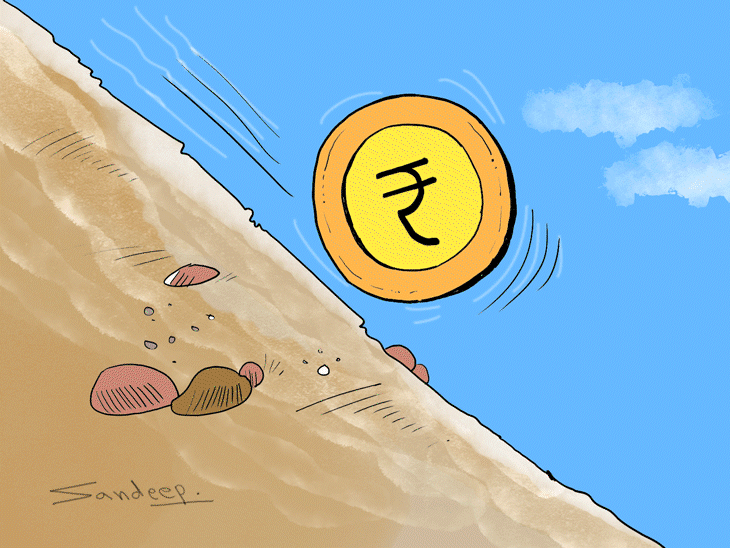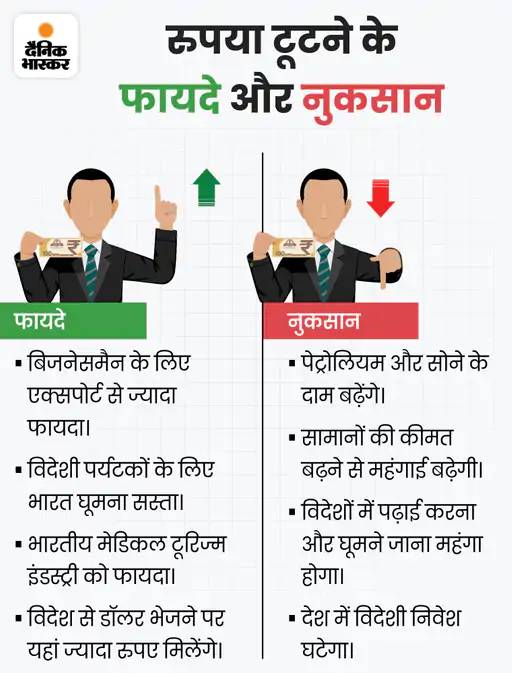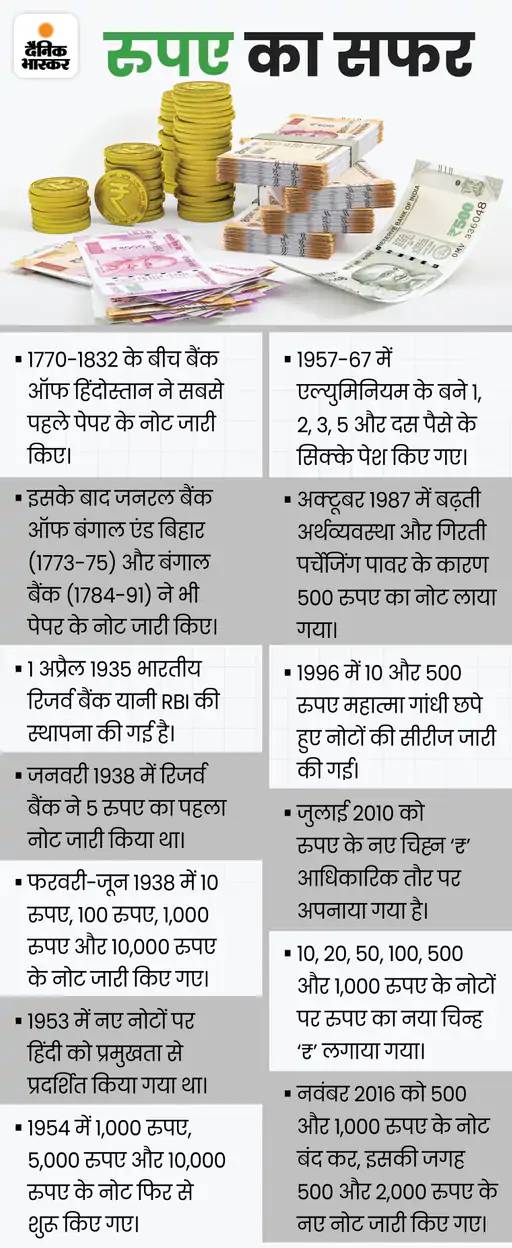New Delhi2 minutes ago
- Copy link

The Indian rupee has come at an all time low of Rs 88 per dollar for the first time on Friday (August 29). Experts say that this decline in the rupee due to America’s additional tariff on India.
Today, the rupee saw a decline of about 64 paise against the US dollar and it has come to the lowest level of Rs 88.29 per dollar. However, till 2:10 pm, the Reserve Bank of India (RBI) sold the dollar and gave a little support to the rupee and started trading at around 88.12.
Rupee weakens 3% so far in 2025
Earlier in February, the rupee came at an all -time low of 87.95 per dollar. In 2025, the rupee has weakened 3% so far and has become Asia’s worst performing currency. On Friday, it also reached a record low compared to Chinese Yuan.
America imposed 50% tariff on India
Experts say that heavy tariffs imposed on Indian goods in America will harm India’s economic growth and foreign trade. The US imposed 25% additional tariffs on Indian goods this week. Due to which India is facing total 50% tariffs.
The next important level of rupee is 89
Anindya Banerjee, the Foreign Exchange Research Head of Kotak Securities, said, “When the rupee reached the level of 87.60, many importers who did not hedge their purchases started to buy dollars fast.
Everyone hoped that RBI would intervene, but it did not happen. After the level of 88 crossed the stop loss order began to trigger. Now the next important level is 89.
GDP growth from tariff may decrease by 0.8%
Economist says that if this tariff remains in force for one year, then India’s GDP growth may decrease by 0.6% to 0.8%. There may be further pressure on the economy slowing down. RBI has estimated a 6.5% growth rate for the current financial year (till 31 March).
India’s Export to America 2.2% of GDP
India has 2.2% of Export GDP to America. Due to tariffs, recession in labor-dominated sectors such as textile and jewelery can affect jobs, which will further increase economic losses.
These tariffs can further increase India’s trade deficit. Especially when the trend of foreign investors is already weak. So far this year, foreign investors have sold $ 9.7 billion in Indian date and equity, or Rs 85,630 crore.
Hari Shyamsunder, Vice President of Franklin Templeton, said, “Export reduction due to tariff can put additional pressure on India’s trade balance.” Overall, the US tariff and the weakness of the rupee have increased India’s economic challenges.

How is the price of currency fixed?
If the value of any other currency decreases compared to the dollar, it is called falling, breaking, weak. Currency deputy in English. Every country has a foreign currency reserve, from which it does international transactions. The effect of decreasing and increasing foreign reserve is seen at the price of currency.
If the dollar in India’s foreign reserve is equal to the reserves of America’s money, then the price of the rupee will be stable. If we have dollars, the rupee will be weak, if we increase, the rupee will be strong. This is called floating rate system.





